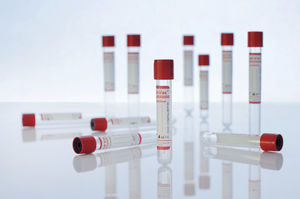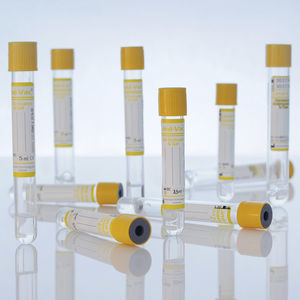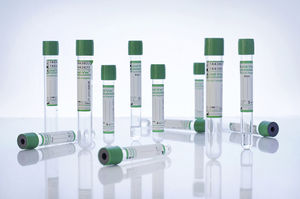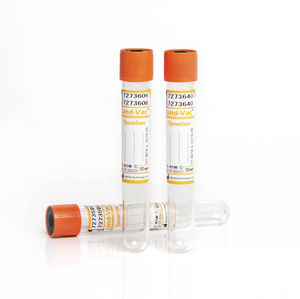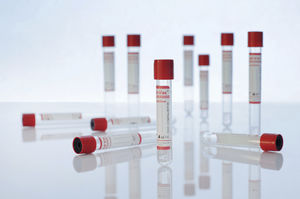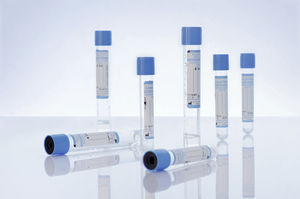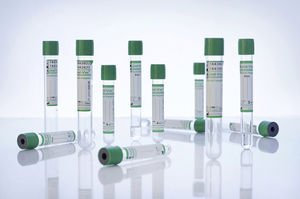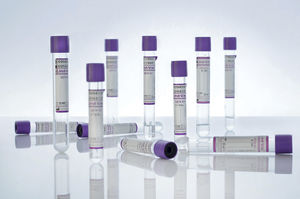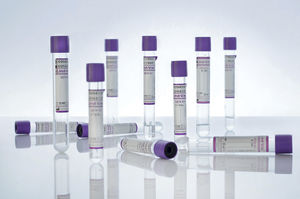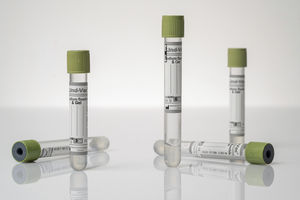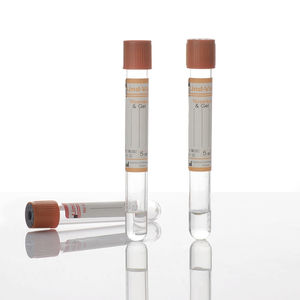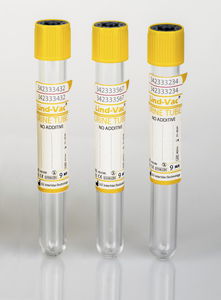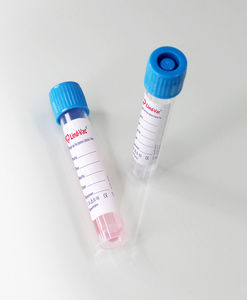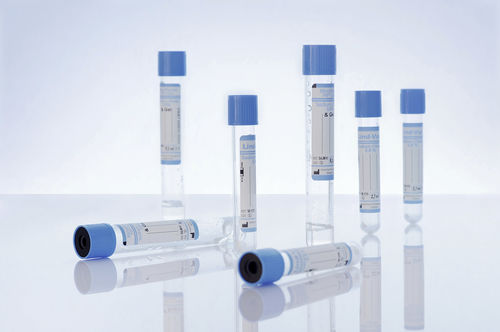
- Laboratory
- Sample management
- Coagulation analysis collection tube
- OÜ InterVacTechnology
Coagulation analysis collection tube LIND-VAC® KE seriesround bottomplasmasodium citrate
Add to favorites
Compare this product
Characteristics
- Applications
- for coagulation analysis
- Shape
- round bottom
- Sample type
- plasma
- Other characteristics
- sodium citrate
- External diameter
13 mm, 16 mm
(0.5 in, 0.6 in)- Height
75 mm, 100 mm
(3 in, 3.9 in)- Capacity
1.8 ml, 2.7 ml, 3.6 ml, 4.5 ml, 8.1 ml
(0.06 US fl oz, 0.09 US fl oz, 0.12 US fl oz, 0.15 US fl oz, 0.27 US fl oz)
Description
With sodium citrate (3.2% 1:9 0.109mmol/L)
Test tubes with sodium citrate are used to collect venous blood for coagulation testing.
Range of application: hemostasis system diagnostics.
Test tubes with sodium citrate are used to collect venous blood for coagulation testing.
Anticoagulant: trisodium citrate dehydrate, concentration:
0,109 mol/L — 3,20% (32,0 g/L);
The ratio of blood to sodium citrate is 9:1.
The anticoagulant properties of citrate are expressed by citrate ions forming calcium citrate complexes with Са2+ ions, effectively disrupting the blood clotting mechanism.
Range of application: hemostasis system diagnostics.
Specimen: citrated plasma.
Centrifugation conditions: 2000-2500 g for 15 minutes.
It is very important to maintain the correct blood to anticoagulant ratio for the citrate sample.
A lack of citrate in the sample leads to microclot formation and/or coagulation of the sample.
An excess of citrate leads to the distortion of analysis results due to calcium binding.
Immediately after the specimen is collected, gently invert the citrate tube at least 5 times to mix thoroughly, preventing microclot formation.
Catalogs
Catalog InterVacTechnology 2023
20 Pages
Related Searches
- Sample tube
- Laboratory sample tube
- Collection tube
- Cylindrical collection tube
- Blood collection tube
- Sampling kit
- Conical test tube
- Collection tube with anticoagulant
- Laboratory swab
- Laboratory collection tube
- Transport swab
- Sterile sample tube
- Sterile swab
- Graduated sample tube
- Blood test tube
- Sample storage tube
- Virus swab
- Hematological analysis collection tube
- Collection tube with clot activator
- Sodium citrate collection tube
*Prices are pre-tax. They exclude delivery charges and customs duties and do not include additional charges for installation or activation options. Prices are indicative only and may vary by country, with changes to the cost of raw materials and exchange rates.



